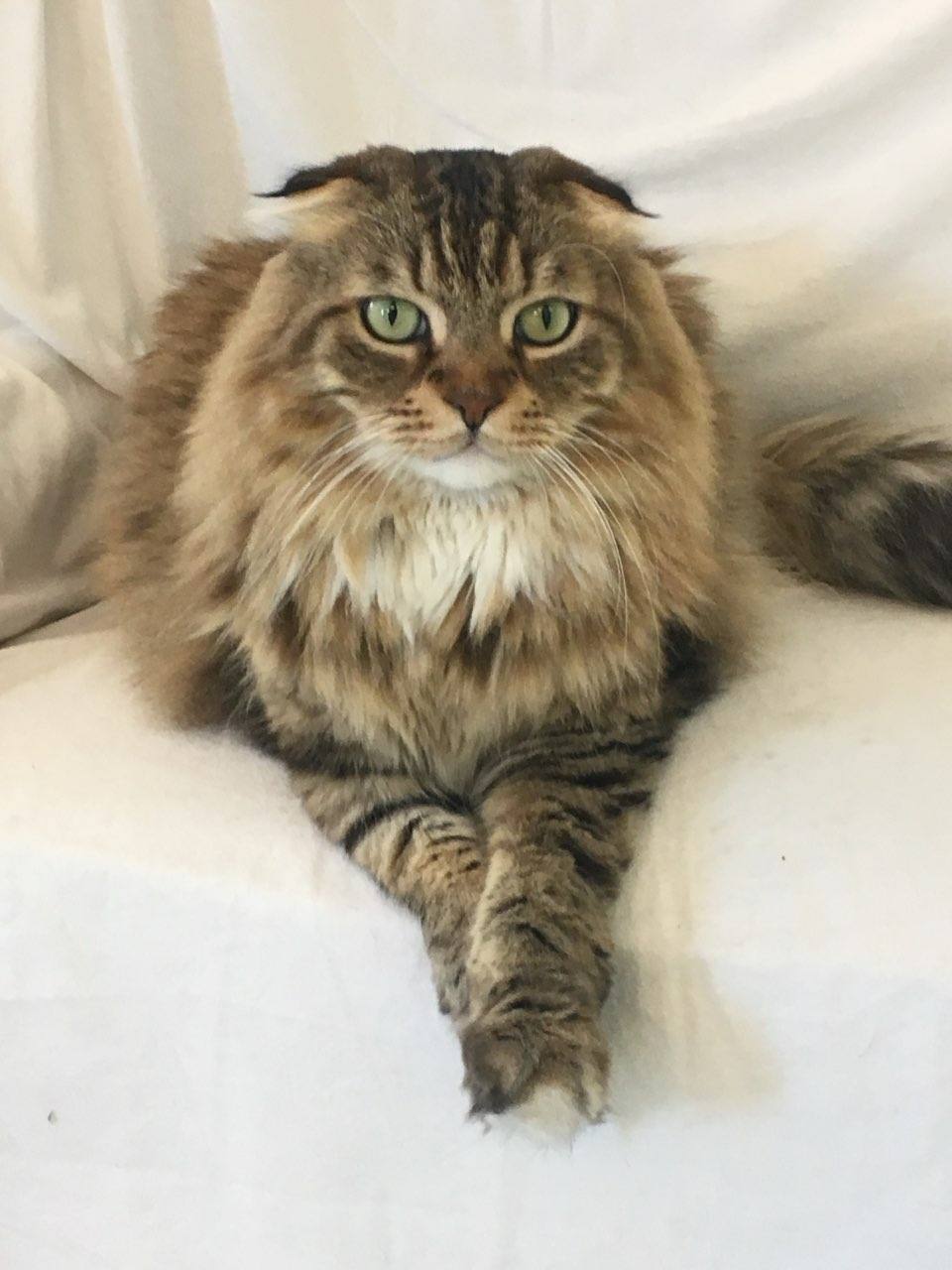|
Years ago, my sister and I were in a mall walking by a pet store, and there was the most unique looking cat in the window. My sister explained it was a Scottish Fold, but I had never seen or heard of one! Now that a certain high-profile singer/celebrity owns a few of these kitties, the breed is in the headlines like never before. Here at Rock The Cat Spa we have been lucky enough to have multiple Scottish Fold guests stay with us! We instantly fell in love with the breed, and we think you will too. As with many other breeds, there are several factors to consider before adopting, and there is some controversy over their folded ears. History of the Scottish Fold
This breed started in Scotland, with a white barn cat named Susie, in 1961. She was the first cat with folded ears, and her kittens also developed the signature folded ears because it is a dominant gene. Someone adopted one of the kittens, started breeding them, and registered the breed as Scottish Fold. By the early 1970s, Scottish Folds could be found in the United States, however many countries will not allow their breeding, and have now banned the sale of them. Scotland is among the countries who no longer allow Scottish Folds to be bred or sold, and many cat registries have stopped recognizing the breed. Medical Concerns Osteochondrodysplasia, also known as “Scottish Fold Disease,” is an inheritable disorder characterized by skeletal deformities, and the reason so many countries don’t support the breed. Not only can the ears be affected, but any cartilage throughout the body and tail may be susceptible to discomfort or pain due to arthritis. The affected cats may show lameness, a reluctance to jump, or stiffness walking. Along with the osteochondrodysplasia, Scottish Folds are prone to heart and kidney issues, and have a tendency to be overweight. This could add to the joint issues they’re predisposed to, so being aware of weight and activity is very important. Folded Ears If you do decide to adopt a Scottish Fold, their ears will not develop for the first month, and they do not all fold. You may end up with a “Scottish Straight” instead! There is roughly a 50/50 chance of a Scottish Fold’s ears folding. If they do, the folded ears add to an owl-like appearance, because this breed is very round all over. More Breed Characteristics Scottish Folds can have fur of every length, every color, and are not hypoallergenic. The short haired varieties have thick, dense coats, while the longer hair kitties tend to be thicker coated on the back legs, tails and thighs. You will also sometimes see them with two different eye colors! Scottish Folds are typically medium-to-large sized, and are healthy up to 13 pounds. Their average life span is 15 years. Personality The Scottish Fold personality is calm and sweet, and they make for a great family cat. They tend to attach to their owners, so be aware if you plan to leave them home alone often; they do not like that. They are very neat cats, and really like a tidy space and litter box. Many also like to sleep on their backs! There are a lot of factors to consider about the Scottish Fold, and talking to your vet or another Scottish Fold owner is very important before deciding to adopt one. They are a financial investment not only in their potential veterinary need, but they also cost up to $2,000 per kitten. While they are cute and super unique, a lifetime of potential health issues is a serious matter when it comes to your furry friend. If you’re lucky enough to have Scottish Fold in your life though, you’ll have a house full of love! (Today’s photo features our gorgeous Scottish Fold friend Remington!)
0 Comments
Leave a Reply. |
AuthorWhen Cari has some free time from all the kitties, she likes to share her knowledge of all things cat in this bi-monthly blog. Enjoy the read! Archives
June 2024
Categories |


 RSS Feed
RSS Feed